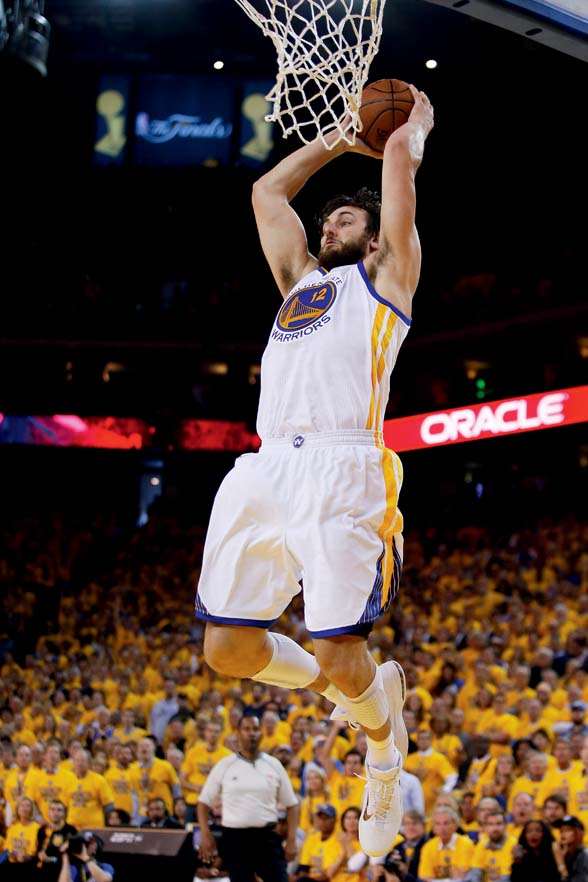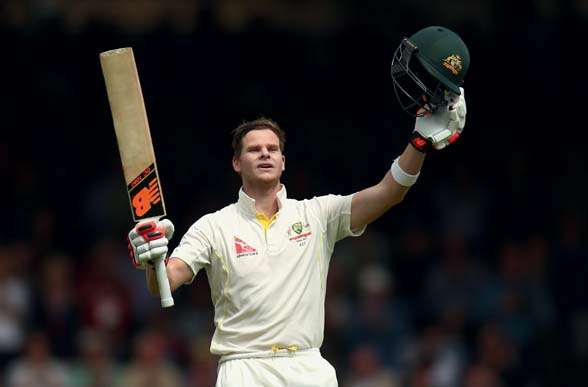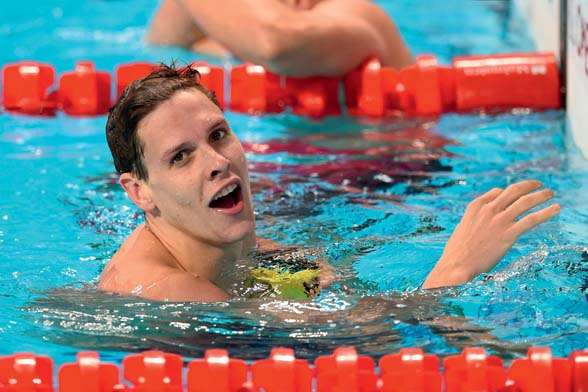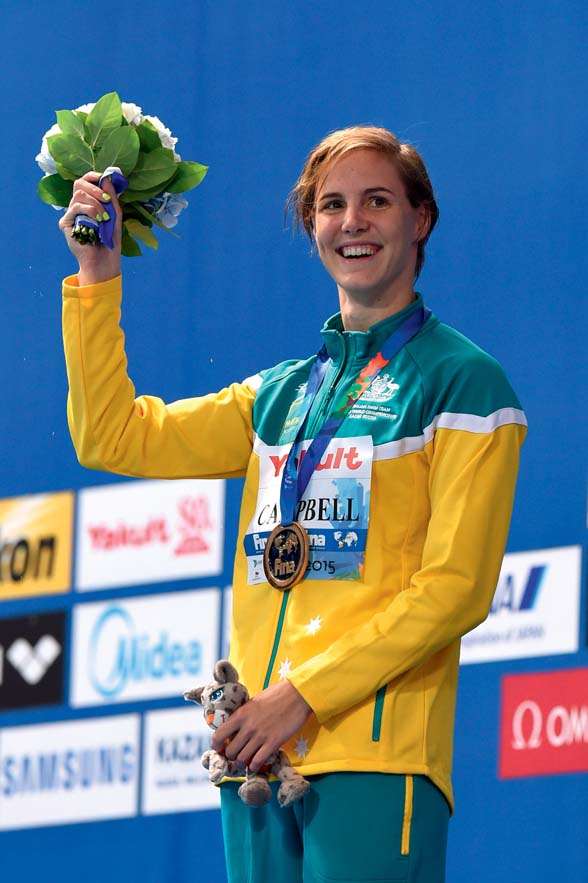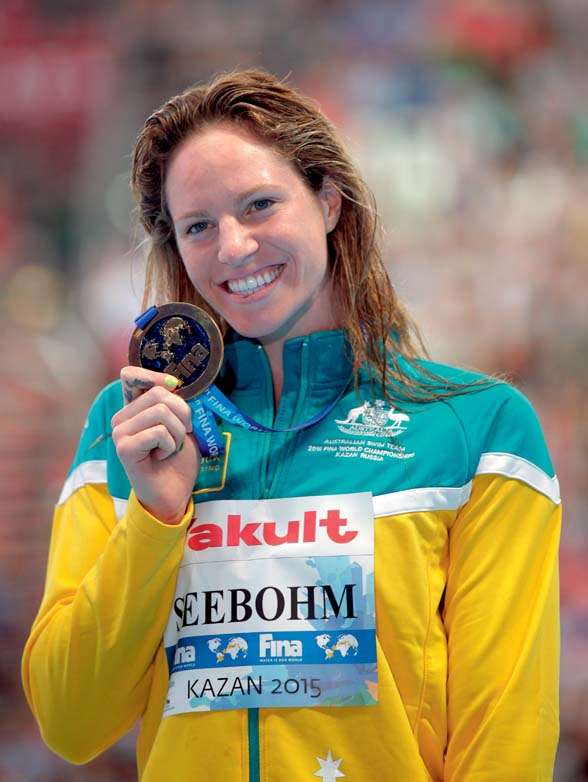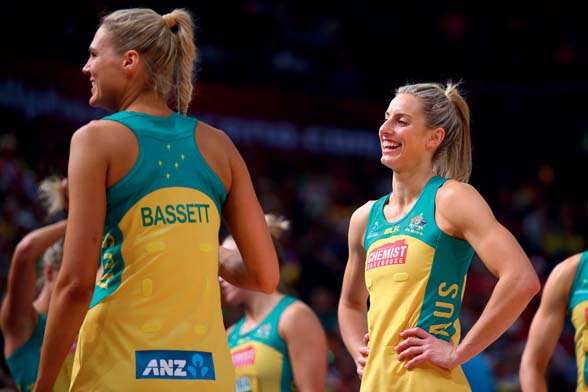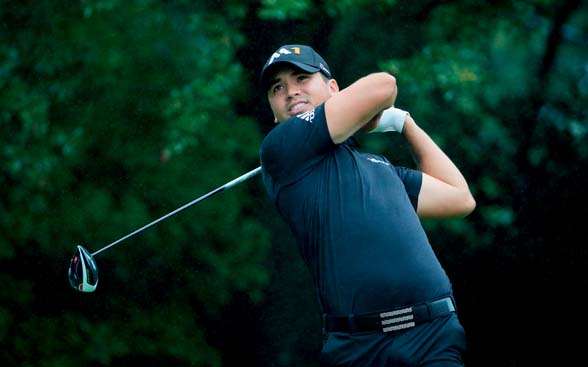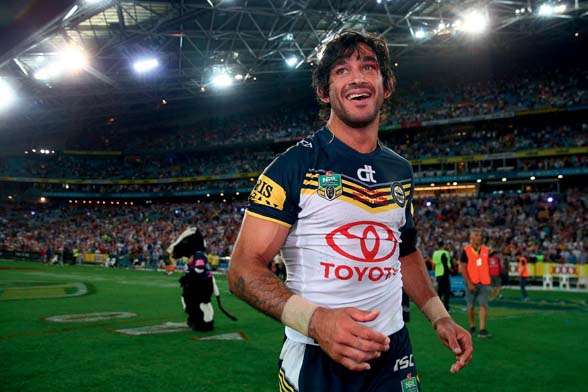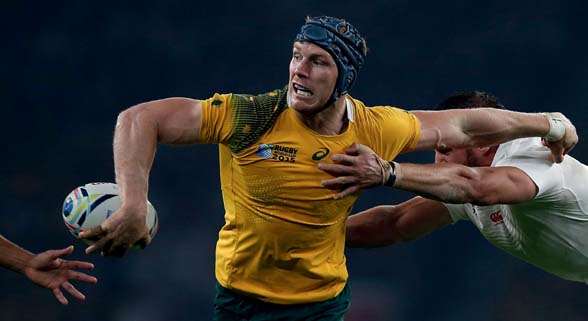Find out who made our list of Australia's best.
No AFL player. No soccer star. No track. No tennis. No cyclists. No sailors. In our annual roll call of our highest sporting achievers in the past 12 months, we settled on these ten giant-killers on the world stage. Any objections?
ANDREW BOGUT
He was rarely seen during the NBA Finals – and this occurred while compatriot Matthew Dellavedova became a cult sensation on the league’s ultimate stage – but Andrew Bogut burnished his claim as Australia’s finest-ever basketballer in becoming an NBA champion. And it wasn’t just about the ring – the 30-year-old was an integral part of a historically great Golden State Warriors team which free-wheeled its way to a 67-win season while playing an avant-garde style of “small-ball” hoops. But the savvy seven-footer was one of the cornerstones of the league’s top-ranked defence (he ended sixth in the voting for the defensive player of the year award), and utterly indispensable when his team needed size, as it was in the conference finals against the Houston Rockets’ interior force, Dwight Howard. While Bogut hasn’t become the kind of all-star some foresaw when he was made the top pick of the 2005 draft, league cognoscenti know exactly how good he is – advanced-stats-based player rankings conducted by ESPN and Sports Illustrated rated Bogut currently higher than Kobe Bryant.
STEVE SMITH
A tumultuous year in cricket, variously marked by tragedy, triumph and transition, overshadowed another major development: the rise of Steve Smith as potentially the defining Australian cricketer of his generation. It wasn’t too long ago that Smith was stuck on the periphery of national selection, a terrific yet unconventional talent not quite harnessed. But in a classic career trajectory for great Australian batsmen, he reformed his game after an initial taste of Test cricket, and set to dominating. In 11 matches dating back to last summer, Smith scored seven centuries, among those a 215 against England at Lord’s, a run-scoring binge that boosted him to the top of the ICC’s Test batsmen rankings. While his long-form success was based on some technical tempering at the crease, he remains an innovative, new-age batsman ideally suited to limited overs. Smith was the Aussies' leading run-scorer during the successful World Cup campaign, including a ton against India in the semi. As a locked-in choice for the top order, with previous leadership experience at various levels, it logically followed that the captaincy might eventually come Smith’s way – and the sudden onset of Michael Clarke’s retirement established the 26-year-old in the nation’s highest sporting office.
BRONTE CAMPBELL
It’s been a massive breakout year for Bronte Campbell – stepping out of the worldbeating shadow of former world champ and big sister Cate, and smoking all comers at the FINA World Championships, winning the blue ribbon freestyle sprint double (50 and 100m). Not to mention anchoring the women’s 4x100m freestyle relay team to gold. Plus winning a bronze swimming the free leg in the 4x100m medley relay. Now, for the year leading up to an Olympic Games, she holds the title of the fastest woman swimmer on the planet, with three world championship gold medals to her name. She is only the third woman in history to have won the 50/100 double and at just 21 has the potential to go even faster, good health permitting. Yes, her biggest rival would appear to be her sister – but this is the best kind of sibling rivalry, and history beckons Bronte.
EMILY SEEBOHM
A rule of thumb when we put together our list of Top Ten Worldbeaters: you win a world championship gold in the pool, we put your name in lights. Win TWO world titles and you’re a shoo-in. So come on down, Emily Seebohm. While she has definitely tasted success at the top end of the sport, winning Olympic gold in London in the 4x100 freestyle relay, individual success in the marquee events has eluded her – which seems unkind to say, given the collection of Olympic silver medals and Commonwealth Games gold already in her swag. But to win not one but two individual golds at the World Championships in Russia earlier this year, sweeping the 100m and 200m backstroke, was just reward for this veteran – who happens to be all of 23 years of age. She’s been swimming at the top level since the age of 14! But big things are ahead for Emily. And now that she’s finally cracked the golden winning code, let’s hope Seebohm rules the backstroke in Rio.
MITCH LARKIN
When Mitch Larkin hit the wall at the end of the 200m backstroke final at the FINA World Championships in Kazan, Russia in August, he didn’t just part the waves – he parted history. He became the first Australian male to win a medal in the event since 1975. He also became the first non-American to win gold in the event in 17 years. And he became the first Australian ever to win the backstroke double at a major meet, having cleaned up the 100m earlier in the week. For a guy who may have struggled in previous competitions to fulfil his potential, this was a dramatic turnaround – not just world-class times, but world-class swims at the right times, swimming his heart out from the early qualifiers through to the final stroke. He is a great story: still just 22, and openly admitting that the Yanks will have been “pissed off” with him for tipping them off the podium. He knows a wave of challengers will be coming his way in Rio next year. He’ll be ready for them.
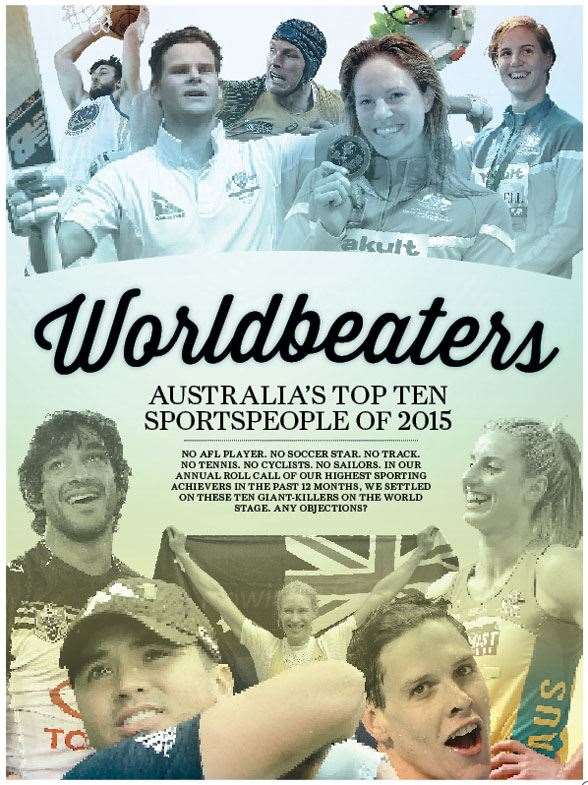
KIM CROW
If the Kim Crow story goes to script, her dominant World Championship win in the single sculls back in September will only be a taster for what she does on the Olympic stage in Rio next year. For it is rowing’s lot that it only truly surges into national consciousness when Olympic golds are in the offing. But some of us know what she did in France: of course it takes sublime teamwork to propel a rowing shell in a crew of two, four or (especially) eight. But it takes supreme skill and fitness to do it all by yourself, and claim the title of the “world’s fastest woman rower”. Famously, the Kim Crow story had its beginnings on the track as a hurdler, running second behind the likes of Jana Pittman when she was at the peak of her powers. But when a knee injury interrupted her athletics ambitions, she turned to rowing in 2005, and since then it’s been a steady rise to the top of the tree. By the time she arrived at the London Olympics she was racing in the double sculls to win silver, then winning bronze in the singles. This world title confirms the 30-year-old’s supremacy. And favouritism heading into Rio. Bring it.
DAVID POCOCK
There were many reasons for the Wallabies’ resurgence in 2015, but it’s no surprise that it coincided with David Pocock’s return to the team after two years. The bustling backrower was Australia’s – and arguably the tournament’s – best player at the Rugby World Cup, as his unsurpassed skills at the breakdown had the rah-rahs raving. Coming into the final, Pocock had snatched 14 turnovers, almost twice as many as the next-most-prolific pilferer, and his presence around the ball had become an indispensable dimension of the Wallabies’ game. The Zimbabwe-born 27-year-old’s impact was also intangible – seemingly racing back from injury for each crucial elimination game, Pocock’s battered visage became the symbol of Wallaby grit. Having recovered from two season-ending knee injuries, Pocock’s physical toughness is unquestioned; so too is his moral courage, as perhaps the most socially conscious Australian sportsman of his day proved in taking an on-field stand against homophobia in a Super Rugby match earlier in the year.
JOHNATHAN THURSTON
Is it too sadistic to suggest that had the North Queensland Cowboys not been robbed against the Sea Eagles, the Sharks and the Roosters over the past four years, that rugby league would have been robbed of the greatest finish to one of the greatest grand finals by one of the greatest players of all time? For Johnathan Thurston, the heartbreak is over, and what a way to eradicate it. He picked up his record-fourth Dally M Medal (by a mile, wasn’t it?) and picked-up thousands of new fans for life, too, when he gave his headgear to a young Melbourne Storm fan on national television. He does this sort of stuff all the time, mind you. He’s just the best role model a league-obsessed kid could have. That any young Indigenous Australian could have. He gives hope to anyone watching him that to give up is to ... miss out. No one would’ve blamed Thurston had he walked away from the game after those “travesties” of previous years, or over the late and unfair treatment he’d always copped from burly props off the ball. But you feel it was supposed to play out like it did; a missed goal from touch that would’ve won the game, then a winning field goal, against another Queensland team. His Cowboys aren’t the little brothers anymore.
LAURA GEITZ
Staring down the barrel of a packed domestic and international schedule, the pressure was always going to be on the superstar of Australian netball in 2015 ... and she handled it superbly. Leading her Queensland Firebirds in their third-straight ANZ Championships grand final, and facing potentially their third-straight defeat, the fiercely strong and tenacious goalkeeper/defender produced one of the clutch plays of Australian domestic sport for the year. After goal attack Gretel Tippett put the Birdies in front for just the first time with 15 seconds remaining on the clock, down the other end Geitz swiped a long ball out of the air intended for the Swifts’ shooters on their trip back. The Firebirds hung on for a famous victory. It was tear-to-the-eye, goosebumps stuff. But if that wasn’t pressure enough, only a matter of weeks later our Captain Courageous was then faced with the onerous task of winning a World Cup for her country on home soil, which she did. Throughout the condensed ten-day tourney she displayed the composure and leadership of the reliable on-court mentor she’s quickly become. A great of the sport in the making, if not already.
Related Articles

Feature Story: Moving the Needle

The Aussies at The Open

